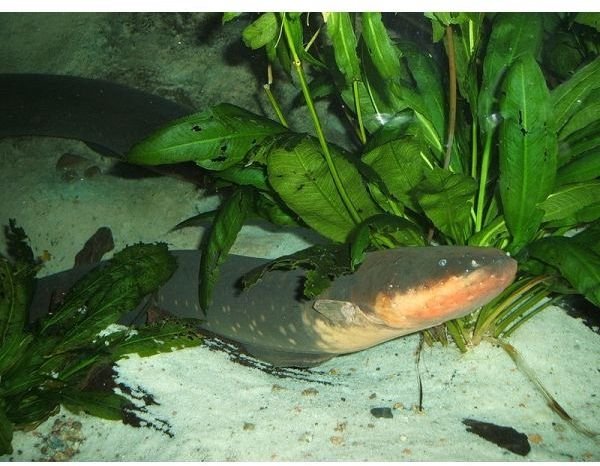Electric Eel Quick Facts: Find Information on their Electric Organs, Diet, & More
Is it an Eel?

The electric eel (Electrophorus electricus) resembles the true eel but it is not actually an eel. It belongs in a different order of fish and is more closely related to the catfish and carp. Find more electric eel quick facts below and learn some interesting information about this “electrifying” water creature.
Description
The body of the electric eel is snake-like with thick, slimy skin. It can exceed 8 feet in length and weigh about 45 pounds. Its anal fin (used as a means of locomotion) extends from the tip of its tail nearly to its chin, allowing it to easily move forward and backward.
The electric eel has gills but its primary source (80%) of oxygen intake comes from the air. This allows the eel to survive in muddy, poorly-oxygenated water because it can surface to gulp in air.
Electric Organs
The electric eel has three electric organs. The weak electric organ (the Sachs organ) emits about 10 volts of electricity and is used like a radar to navigate and find prey. This is an important feature because the eel has poor eyesight and is active during the night hours (meaning it is nocturnal). This organ is also believed to play a part in finding and choosing a mate. The strong electric organs (the Main and Hunters organs) can emit around 600 volts of electricity (that is five times the power of a 120 volt wall socket) and is used to stun or kill its prey and to defend itself from predators.
Habitat
The electric eel lives near the bottom of murky waters of the Amazon and Orinoco basins of South America. Although the number of electric eels are abundant, they can not be collected without a permit.
Diet
Electric eels are top predators because not many animals are willing (or able) to capture and eat them. Juvenile eels feed mainly on small invertebrates like shrimp. Adults feed mainly on small fish but will also eat crustaceans, amphibians, birds, and small mammals.
Reproduction
The electric eel reproduces during the dry season. The male prepares a well-hidden nest made of saliva for the female to lay her eggs which he will protect. Up to 17,000 baby eels will hatch in one nest.
More Information
More interesting electric eel quick facts include:
• Locals of the Amazon occasionally eat electric eels but they are normally avoided because their electric shock can occur up to 8 hours after death.
• Human deaths are very rare from these eels but multiple shocks can cause respiratory arrest or heart failure (people have drowned in shallow water after being shocked).
• It is not known how long the eel survives in the wild. In captivity, the male lives 10-15 years and the female lives 12-22 years.
• The electrical organs have been studied in great detail. Learn more about how an electric eel shocks.
Sources Used
- https://animals.nationalgeographic.com/animals/fish/electric-eel.html
- https://www.aqua.org/animals_electriceel.html
- https://animaldiversity.ummz.umich.edu/site/accounts/information/Electrophorus_electricus.html
Photo Credit
Image courtesy of CC-BY-SA-3.0 / Steven G. Johnson at Wikipedia.